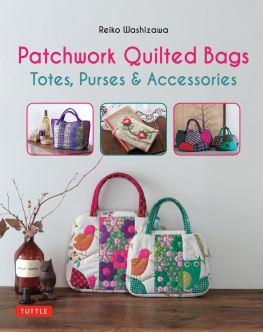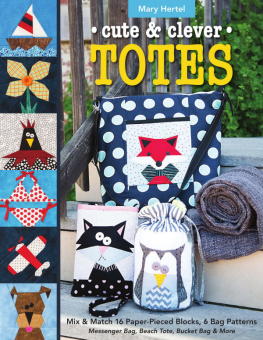About Tuttle
Books to Span the East and West Our core mission at Tuttle Publishing is to create books which bring people together one page at a time. Tuttle was founded in 1832 in the small New England town of Rutland, Vermont (USA). Our fundamental values remain as strong today as they were thento publish best-in-class books informing the English-speaking world about the countries and peoples of Asia. The world has become a smaller place today and Asias economic, cultural and political influence has expanded, yet the need for meaningful dialogue and information about this diverse region has never been greater. Since 1948, Tuttle has been a leader in publishing books on the cultures, arts, cuisines, languages and literatures of Asia. Our authors and photographers have won numerous awards and Tuttle has published thousands of books on subjects ranging from martial arts to paper crafts.
We welcome you to explore the wealth of information available on Asia at www.tuttlepublishing.com.
Chapter Basic Bags
Bags & Pouches My thinking is that if Im going to make a bag, I want it to be cute, practical and durable! With that in mind, Id like to introduce you to my go-to bag design. You may be slightly intimidated by the zipper and gusset, but dont worry. The detailed step-by-step instructions and helpful photos will gently guide you all the way through.


Make this versatile bag out of some of your favorite printed fabrics. The Little Bird Bag
This bag was inspired by the idea of a playful birds frolicking in a garden abloom with flowers made from hexagon pieces (pattern sheet A).
The roomy interior of the bigger bag holds file sizes up to A4. (a little larger than 8 x 11 in / 21.6x28cm). For the bird motif, select hardy materials such as curtain fabric. The two-way zipper makes this bag extra convenient. Production: Big Bag / Mayumi Honma Small Bag / Toshiko Ikeda Process Assistance: Ritsuko Ariki, Mituko Furukawa, Yasuko Oya, Mieko Nishioka, Naoko Masuda, Emiko Matoba, Emiko Mori Pattern Sheet 
 By quilting along the owls outline, the motif looks charmingly fluffed.
By quilting along the owls outline, the motif looks charmingly fluffed.  The back pattern pieces are joined together to create a single fabric piece (not including the corners).
The back pattern pieces are joined together to create a single fabric piece (not including the corners).  The back pattern pieces are joined together to create a single fabric piece (not including the corners).
The back pattern pieces are joined together to create a single fabric piece (not including the corners).
Change up the look by featuring varying parts of the fabric or by using different fabric for the handles.  The accommodating handles can be worn on the shoulder or carried by hand. The gusset provides enough room for a pouch.
The accommodating handles can be worn on the shoulder or carried by hand. The gusset provides enough room for a pouch.  Inserting yarn in the batting within the handles strengthens them and ups the comfort level. Fabric and Materials Preparation
Inserting yarn in the batting within the handles strengthens them and ups the comfort level. Fabric and Materials Preparation 
 Recommended foundation fabric: mid-weight cotton. Recommended patchwork fabric: 100% cotton flat weave.
Recommended foundation fabric: mid-weight cotton. Recommended patchwork fabric: 100% cotton flat weave.
Quilt batting: to be sandwiched between the outer and backing fabrics. Batting comes in assorted substrates, but the samples in the book are constructed with a in (5mm)-thick, 100% polyester fusible batting. Quilt backing: lightweight white fabric. Lining fabric. Fabric for handles and corners. Yarn: preferably a standard weight acrylic blend.
Select yarn that will not shrink in the wash. Zipper: two-way.  The exterior is an ironing board, and the interior has two panels: one side is a marking tool that holds fabric pieces in place, and the other side is a cutting board. Measuring at 11 in (29cm) high and 9 in (24cm) wide, its a portable as well as useful tool. Patchwork board: a multifunction apparatus that can be used as an ironing board as well as a marking tool for patchwork pieces. Iron: for pressing seam allowances and for fusible quilt batting.
The exterior is an ironing board, and the interior has two panels: one side is a marking tool that holds fabric pieces in place, and the other side is a cutting board. Measuring at 11 in (29cm) high and 9 in (24cm) wide, its a portable as well as useful tool. Patchwork board: a multifunction apparatus that can be used as an ironing board as well as a marking tool for patchwork pieces. Iron: for pressing seam allowances and for fusible quilt batting.
Ruler: for drafting and marking. Pencil with HB or B lead: for drafting and marking. Marking pen: preferably a water-soluble type. Ring Thimble A : useful for protecting fingers when basting or gathering fabric pieces together. Place between the first and second joints of the middle finger. Simple Thimble B : Slip on tip of thumb while quilting.
Long needles for basting. Quilting Needles: these needles are thinner and shorter than regular hand sewing needles. Use for piecework or quilting. Pins: to hold fabric pieces together temporarily. Yarn needle: needle with a large eye for sewing with yarn. A Basting Thread: to temporarily secure fabric pieces together.
B Quilting Thread: for quilting. C Regular Thread: for piecing fabrics together. Scissors (3 pairs): A Scissors for cutting paper. B Fabric shears. C Small scissors for cutting thread. Thicker tracing paper: for creating pattern pieces.
Pattern Drafting and Construction steps  Using plain or grid paper, trace the foundation pieces, patchwork pieces, gussets, and handles. Based on the number and size of the pattern pieces, assess how much fabric you will need. Before you start sewing, review all the steps of the process; this way the construction for the actual bag will go much more smoothly.
Using plain or grid paper, trace the foundation pieces, patchwork pieces, gussets, and handles. Based on the number and size of the pattern pieces, assess how much fabric you will need. Before you start sewing, review all the steps of the process; this way the construction for the actual bag will go much more smoothly. 
 MATERIALS (REFER TO IMAGE ON P.) Foundation fabric29 x 21 / in (7555cm) Patchwork Fabric (6 pieces) 8 x 7 in (2018cm) each Fusible Quilt Batting43 / x 19 / in (11050cm) Backing Fabric31 x 13 in ( 8035cm) Lining Fabric31 x 33 in (8085cm) Handle and corner fabric19 / x 10 in (5025cm) YarnAs needed Two-way zipper19 / in (50cm) long NUMBER OF PIECES REQUIRED
MATERIALS (REFER TO IMAGE ON P.) Foundation fabric29 x 21 / in (7555cm) Patchwork Fabric (6 pieces) 8 x 7 in (2018cm) each Fusible Quilt Batting43 / x 19 / in (11050cm) Backing Fabric31 x 13 in ( 8035cm) Lining Fabric31 x 33 in (8085cm) Handle and corner fabric19 / x 10 in (5025cm) YarnAs needed Two-way zipper19 / in (50cm) long NUMBER OF PIECES REQUIRED  CONSTRUCTION STEPS 1 Draft pattern pieces and cut out fabric. 2 Create flower patchwork.
CONSTRUCTION STEPS 1 Draft pattern pieces and cut out fabric. 2 Create flower patchwork.  Draft Pattern Pieces, Cut out Fabric Although you could measure the dimensions directly onto the fabric, it is likely that the fabric will shift along the way.
Draft Pattern Pieces, Cut out Fabric Although you could measure the dimensions directly onto the fabric, it is likely that the fabric will shift along the way. 
Next page











 Make this versatile bag out of some of your favorite printed fabrics. The Little Bird Bag
Make this versatile bag out of some of your favorite printed fabrics. The Little Bird Bag
 By quilting along the owls outline, the motif looks charmingly fluffed.
By quilting along the owls outline, the motif looks charmingly fluffed.  The back pattern pieces are joined together to create a single fabric piece (not including the corners).
The back pattern pieces are joined together to create a single fabric piece (not including the corners).  The accommodating handles can be worn on the shoulder or carried by hand. The gusset provides enough room for a pouch.
The accommodating handles can be worn on the shoulder or carried by hand. The gusset provides enough room for a pouch.  Inserting yarn in the batting within the handles strengthens them and ups the comfort level. Fabric and Materials Preparation
Inserting yarn in the batting within the handles strengthens them and ups the comfort level. Fabric and Materials Preparation  Recommended foundation fabric: mid-weight cotton. Recommended patchwork fabric: 100% cotton flat weave.
Recommended foundation fabric: mid-weight cotton. Recommended patchwork fabric: 100% cotton flat weave. The exterior is an ironing board, and the interior has two panels: one side is a marking tool that holds fabric pieces in place, and the other side is a cutting board. Measuring at 11 in (29cm) high and 9 in (24cm) wide, its a portable as well as useful tool. Patchwork board: a multifunction apparatus that can be used as an ironing board as well as a marking tool for patchwork pieces. Iron: for pressing seam allowances and for fusible quilt batting.
The exterior is an ironing board, and the interior has two panels: one side is a marking tool that holds fabric pieces in place, and the other side is a cutting board. Measuring at 11 in (29cm) high and 9 in (24cm) wide, its a portable as well as useful tool. Patchwork board: a multifunction apparatus that can be used as an ironing board as well as a marking tool for patchwork pieces. Iron: for pressing seam allowances and for fusible quilt batting.
 MATERIALS (REFER TO IMAGE ON P.) Foundation fabric29 x 21 / in (7555cm) Patchwork Fabric (6 pieces) 8 x 7 in (2018cm) each Fusible Quilt Batting43 / x 19 / in (11050cm) Backing Fabric31 x 13 in ( 8035cm) Lining Fabric31 x 33 in (8085cm) Handle and corner fabric19 / x 10 in (5025cm) YarnAs needed Two-way zipper19 / in (50cm) long NUMBER OF PIECES REQUIRED
MATERIALS (REFER TO IMAGE ON P.) Foundation fabric29 x 21 / in (7555cm) Patchwork Fabric (6 pieces) 8 x 7 in (2018cm) each Fusible Quilt Batting43 / x 19 / in (11050cm) Backing Fabric31 x 13 in ( 8035cm) Lining Fabric31 x 33 in (8085cm) Handle and corner fabric19 / x 10 in (5025cm) YarnAs needed Two-way zipper19 / in (50cm) long NUMBER OF PIECES REQUIRED  CONSTRUCTION STEPS 1 Draft pattern pieces and cut out fabric. 2 Create flower patchwork.
CONSTRUCTION STEPS 1 Draft pattern pieces and cut out fabric. 2 Create flower patchwork.  Draft Pattern Pieces, Cut out Fabric Although you could measure the dimensions directly onto the fabric, it is likely that the fabric will shift along the way.
Draft Pattern Pieces, Cut out Fabric Although you could measure the dimensions directly onto the fabric, it is likely that the fabric will shift along the way.